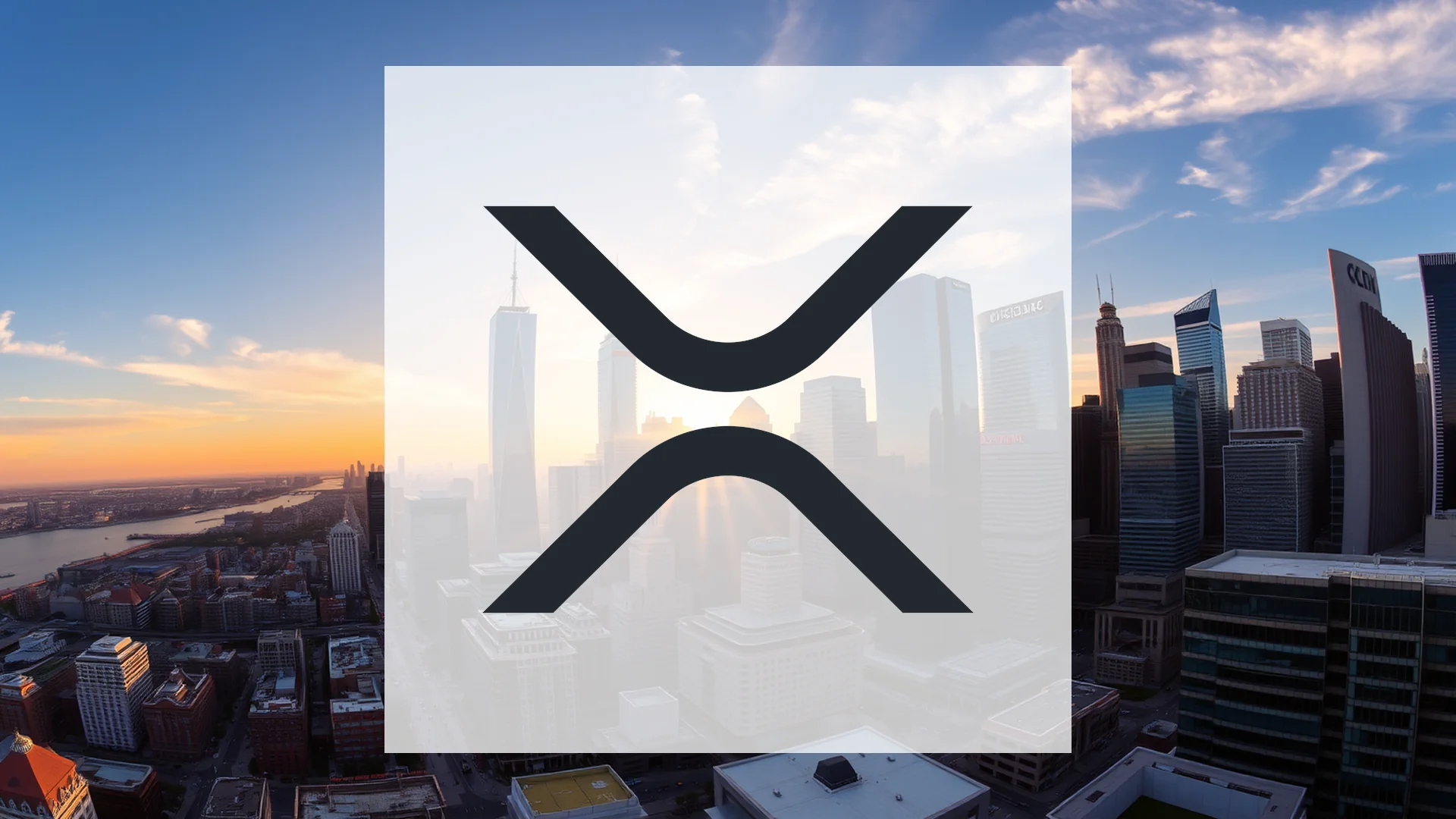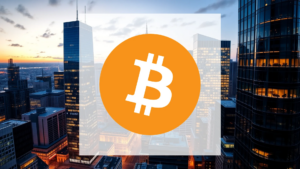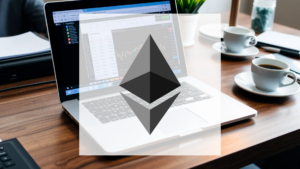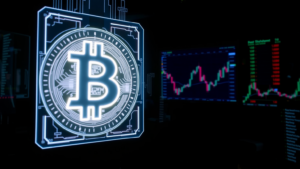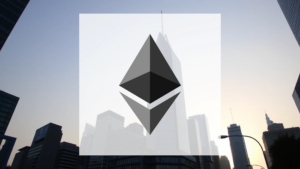TikTok Deal Averts U.S. Ban: Trump-Xi Pact Ushers in New Era of U.S.-China Tech Truce Amid Global Scrutiny
Washington, D.C. – September 20, 2025 – In a dramatic diplomatic turnaround that has redefined the future of national regulation of technology, President Donald Trump declared an extraordinary diplomatic settlement with Chinese President Xi Jinping, banishing the idea of a nationwide ban on Tik Tok and instead proposing an unsavory model of the so-called American firewall that transfers the operational authority to a group of American companies.
It is the first significant compromise in the aggressive Trump trade war re-escalation, and only days prior to the UN General Assembly, where digital sovereignty will be the news of the day. The smiling President Trump boasted in the Oval Office about a daylight briefing that the deal was the art of the deal on steroids, providing 170 million American users with the safety of their data and returning the possessions of Beijing to the territory of the American people.
Trump said, surrounded by Commerce Secretary Howard Lutnick and a group of Silicon Valley bosses, “TikTok remains, but on our conditions – no longer spying, no longer programs corrupting the minds of our children, and so on. Within the agreement, TikTok operations in the U.S. will shift to Oracle and Walmart servers by the end of the year and a new oversight board with appointees by the FBI and NSA will audit the content moderation and user data flow.
In return, the U.S. has lifted tariffs on up to $50 billion worth of Chinese consumer electronics, a move which analysts believe may ease the poor relationship between the two countries. The announcement comes after months of lawsuits on its heels, which culminated in a Supreme Court faceoff in early 2011, the outcome of which had the app by a thread.
The Beijing-based parent company of TikTok, ByteDance, was delighted with the resolution, declaring it a win for creators across the globe and promising to invest $ 2 billion in U.S. data centres in Virginia and Texas. Nevertheless, the fine print of the deal, such as the requirement to de-Sinicise recommendation algorithms and prohibit state-affiliated influencers, has attracted criticism among proponents of free speech, who label it as state overreach in the digital town square.
The Call That Changed Everything: Inside Trump-Xi Diplomacy
The specifics of the landmark Trump-Xi telephone conversation that lasted more than four hours, beginning at 10 p.m. ET Friday, leaked out of the White House and the state press in Beijing. According to sources, the rapport-building opener was accompanied by golf-based anecdotes – Trump allegedly joked about Xi hitting a swing in a summit to Mar-a-Lago in 2017 – and then proceeded to discuss the thorny issues at TikTok.
Xi, Xinhua says, emphasised mutual respect for the concept of tech sovereignty and made some comparisons with the 2019 blacklisting of Huawei, though Trump responded with requests for disclosure on the relationship of ByteDance with the People’s Liberation Army.
The breakthrough was represented by a set of concessions mediated by the U.S. Trade Representative Katherine Tai: TikTok’s algorithm is open-sourced to be audited by third parties, and Chinese engineers are not allowed to enter U.S. territories.
In their turn, China pledged to release American applications such as Instagram in a few provinces, a pilot project dubbed Silk Road 2.0 in terms of digital trade. This is not giving up, it is just a plan, Lutnick explained to reporters, estimating that the deal would open up $100 billion of e-commerce across multiple countries in the coming seven years.
Critics consider dark spots of compulsion, though. Amnesty International branded the oversight board as a censorship trojan horse, as it had the potential to suppress viral activism in the form of Black Lives Matter videos to pro-Palestine dares. Sen. Elizabeth Warren, on Capitol Hill, proposed a bill to withdraw the tariff relief, claiming that it benefits the Xi data abuse practice, which is predatory. Respectable publications such as The Intercept dubbed the deal ” TikTok Treason and claimed that Trump was selling national security to the tech donors in exchange for campaign cash.
International Techno Talk: Brussels to Beijing Boardrooms
The TikTok ceasefire has spread much further than the Pacific, sparking a firestorm in the international forums. French President Emmanuel Macron declared at the upcoming General Assembly meeting at the UN in New York that he would present a proposal called Digital Schengen, which would be like the one used in the United States to isolate the EU data on non-European sites.
Macron, positioning his eye on 150 million European users of TikTok, said: Sovereignty is not optional in the algorithm age. The UK, which had just concluded its own inquiry into ByteDance, also indicated that it was on side, with Prime Minister Keir Starmer promising that it was not above the law.
The transaction is a source of envy and alarm in Asia. Indian officials, who are still bitter about their TikTok ban of 2020, which spawned domestic competitors such as Moj, are considering reversing their action to attract U.S. investment.
Why not change the cake and eat it too, like America? Armed Commerce Minister Piyush Goyal in Mumbai. In Southeast Asian markets, where TikTok contributes to 40 per cent of social commerce, shares in Sea Limited and Grab increased by 7 per cent, betting on recovered revenues in adverts.
The response of Beijing to this was a moderate but also informative one. A section broadcast by state broadcaster CCTV boasted of the mature management of the never-before-seen level of differences, though censors were quick to remove viral posts taking jabs at Xi as a sugar daddy on TikTok.
Chinese tech giants such as Tencent were lobbying via closed doors behind the scenes to gain access to U.S. markets as well as the other way around, and talks of a WeChat carve-out may happen in the future. It is the door open – but what may be walking through? China Neican analyst Adam Ni.
It was economically good news on Wall Street: The implied valuation of ByteDance gained 12% in the after-hours trading, and Oracle stock increased 5%. More expansive markets, such as S&P 500 futures, rose by 1.2% with alleviated concerns about the supply chain. But privacy hawks still cite residual threats; an NSA leak is that 20 per cent of TikTok data is still flowing through Hong Kong nodes, which the Five Eyes can intercept.
Stylist and Respondents: Jubilation Mixed with Jitters
TikTok influencers calmed down on the ground. The queen of the app, Charli D’Amelio, whose follower count is 155 million, shared a dance floor saved duet and earned 50 million views within hours.
Smaller organisers in key battlegrounds such as Pennsylvania attributed the platform to boosting voter turnout, one Ohio organiser said to NPR, “Without TikTok, our turnout would go down by 30%. The e-commerce aspect of the app, TikTok Shop, which made 20 billion dollars of sales in the U.S. last year, is relatively unaffected, but emerging labels of made in America would change viral hauls.
In the case of user sentiment, it breaks down across the generational lines. According to a poll carried out by Morning Consult, 68 per cent of Gen Z did not support the firewall as “Big Brother vibes,” compared to 55 per cent of boomers who did.
Mental health professionals, such as Dr Jean Twenge, cautioned of unpredictable consequences with references to the studies according to which the adjustment to algorithms led to increasing anxiety levels among teenagers. Twenge, in The Atlantic, wrote that, because personalisation is addictive, depersonalising it may only drive children towards the darker end of the internet.
Legal skirmishes loom. The ACLU submitted several amicus briefs that questioned the constitutionality of the oversight board, arguing that it infringes on First Amendment rights. Meanwhile, class-action suits by creators on lost ad revenue in the uncertainty arise against ByteDance. According to EFF Cindy Cohn, this is a purchase of time and not trust.
Math-Midterm and Beyond: Politics in the Pixels
The agreement domestically is a boost to the reelection campaign of Trump. According to Emerson College polling, the boost by 6 points was among suburban independents, who regard TikTok as a cultural stalwart.
GOP strategists intend to roll out ad blitzes portraying the deal as tough on China and unappealing to America in swing districts in California and New York. Democrats, who found themselves on the wrong side, disintegrate: House Speaker Mike Johnson celebrated the “pivotal turn to pragmatics and Senate Majority Leader Chuck Schumer denounced it as a surrender to dictators.
In the future, the TikTok template may snowball. Trump threatened to expand other applications, such as Weibo and Douyin, indicating that the UN would ratify a Global Fair Play Act. Tech utopians envision AI governance via collaboration, dystopians a balkanized internet, in which the frontiers form firewalls.
To an average scroller, it is easy to say that the verdict is twofold: videos are still coming, but with an asterisk. A reaction videotape was captioned by one of the creators of the viral as saying, “Saved by the deal, but who is watching the watchers? Judging by the last day, September 20, 2025, was not only a reprieve to dances and duets, but also a vote on who owns the scroll in a weird world. Will this ceasefire create amalgamation or disintegration? The program – a bit more American – will make a judgment.
Trump’s $100,000 H-1B Visa Fee and $1 Million Gold Card Spark Worldwide Immigration Uproar
Washington, D.C. – September 20, 2025 – President Donald Trump took a radical and controversial step that has shaken the tech capitals and global political spheres, signing a massive executive proclamation at the very end of the day on Friday, charging an outrageous fee of 100,000 annually on the H-1B visa applications, and introducing a highly controversial Gold Card program of the ultra-rich immigrants.
The two announcements, which are effective in the case of new applications beginning on September 21, reflect the most radical rebranding of U.S. immigration policy since coming to office earlier this year, a combination of populist rhetoric of securing American employment and a pay-to-play system of global elites.
The declaration, which is called the Restriction on Entry of Certain Nonimmigrant Workers, comes at a time when the lack of labour in Silicon Valley and other areas is raising the levels of tension. Appearing at the White House Rose Garden, with the leaders of the labour unions and border security officials in his wake, Trump outlined the changes as a needed fortification against what he termed as a corporate exploitation of American workers.
Trump promised to restore jobs to the real Americans, not give them to the cheap foreign labour, and his voice resonated throughout a crowd of his supporters waving America First signs. The H-1B program, which permits U.S. companies to engage overseas workers in speciality jobs such as software engineering and data mining, has been a saviour of the tech industry since its inception, but a lightning rod to critics who claim it lowers domestic wages.
The new regulations mean that the base fee that the companies employing H-1B workers pay per visa will increase to the astronomical amount of $100,000 a year, as compared to the previous base fee of $460 plus other charges that, in most cases, do not go beyond $5,000.
Proponents of the administration explained the increase by reference to data indicating that more than 70 per cent of H-1B visas are awarded to a few outsourcing companies, most of whom are located in India, and they believe that the Indians are using the visas to send in low-paying talent. An example of this fee system is to guarantee that the select few skills that are the most elite, that is, those skills that generate actual value, pass through the system, with the fee being used to finance vocational training of U.S. citizens.
The Gold Card: A Fast-Track for the One Percent
Along with the H-1B crackdown also comes the implementation of the so-called Gold Card, a high-end immigration package aimed at high-net-worth immigrant individuals who have deep pockets.
Gold Card Pricing Individuals – The Gold Card costs onemillion dollars and corporations that sponsor executives $2million dollars and includes a five year renewable residency permit, expedited processing of green cards and unrestricted work authorization. Anyone who can afford to spend more has a “Platinum Card” version, priced at $5 million, that grants tax exemptions on foreign income for up to 270 days of stay in the U.S. and priority in federal investment incentives.
The White House press release referred to the program as a win-win to the American economy by estimating that the program would bring in billions of dollars in immediate revenue and be attractive to innovators and investors in China, Europe and the Middle East. Why pursue talent when talent can buy its way in? equipped one of the top officials, repeating the Trump campaign pledges to make money out of immigration.
The Gold Card is inspired by other versions of the so-called golden visa programs in such countries as Portugal or the UAE, but in a magnified form that the U.S. has never tried before. The first applicants are reportedly tech billionaires in Asia and European hedge fund managers looking to get tax benefits.
However, the program has become an instant target of criticism against its perceived two-level system: not only rewarding the skilled middle-class labourers, but also welcoming the superrich. It was also referred to as payola to passports by the immigration advocates, who thought that it was a worsening factor to inequality in a society that is already stratified.
The statement was issued several hours after the announcement, and in a statement, Maria Gonzalez, executive director of the National Immigration Forum, said: This isn’t reform, it is ransom. The timing of the policy, only weeks before the debates of the midterm elections begin to run hot, is indicative of a calculated move to revitalise the Republican base and win the approval of the donor class.
Tech Titans Reel: Layoffs and Legal Threats Loom
The technology sector, which depends on H-1B visas to bring approximately 85,000 employees every year, exploded in indignation, vowing to cause instant innovation and development upheaval. Satya Nadella, the CEO of Microsoft, which has thousands of H-1B visas, sent an email to his employees at the end of Friday night, instructing HR departments to halt hiring new internationally based workers and to explore alternative options, such as remote work in Canada or Ireland.
Nadella wrote that this fee is not just a price, but a barrier to the kind of diverse talent that will drive our future, with the implication of possible lawsuits that may take the proclamation to court on its legality in relation to the Immigration and Nationality Act.
Amazon, Google, and Apple shared the feeling, with Andy Jassy, the Amazon executive, publicly criticising the decision as short-sighted and economically suicidal. Analysts project that the fee might contribute to the industry as a whole, adding $10 billion in compliance costs annually, leading to concerns of mass layoffs of U.S.-based support staff and an exodus to rival countries. The largest H-1B sponsor, Tata Consultancy Services (TCS), whose shares lost nearly 8 per cent in Mumbai trading, worried about cancelled contracts with clients in the U.S.
Wall Street was quick with the Nasdaq Composite falling by 2.3 per cent early on Friday on immigration fears, but the defence and manufacturing shares defied the trend. One of the largest H-1B employers in finance, JPMorgan Chase, held emergency board meetings to determine the effects on its international business.
Real people, engineers, scientists, their dreams are now unaffordable, it is what Sheryl Sandberg, former Meta COO and current board member at multiple tech companies, told CNBC. Industry lobby groups such as the U.S. Chamber of Commerce promised to lobby Congress to repeal it, anticipating that the fee would end up trimming 0.5% off the GDP growth by lowering the R&D.
Global Ripples: Fury from India to Brussels
The international reaction to the proclamation was rapid and harsh, especially in India, where there is more than 70 percent of H-1B beneficiaries. New Delhi summoned U.S. Ambassador Eric Garcetti for consultations on Saturday morning, with Foreign Minister S. Jaishankar denouncing the charge as discriminatory and regressive.
Exported Indian IT to the U.S., worth 50 billion a year, is also existentially at risk, with the Indian trade organisation, Nasscom, predicting that 200,000 jobs would be lost back home in case the American companies begin resorting to local employee recruitment.
European Commissioner of Trade Valdis Dombrovskis threatened to impose retaliatory tariffs on American products in Brussels due to the fact that the policy would interfere with cross-Atlantic data flow.
Dombrovskis said, Talent mobility is the blood of our partnership, as seen in WTO arbitration. The Chinese state media, in its turn, took the Gold Card as an opportunity to demonstrate the hypocrisy of the United States and the cartoons in the People’s Daily illustrated Uncle Sam selling out his visas to the top offeror.
Even allies, such as Canada and the UK, were not comfortable. Ottawa Immigration Minister Marc Miller said a faster track may be created to reap U.S.-bound tech talent that has been redirected to Canada, and London tech minister Peter Kyle suggested financial incentives to retain displaced employees. The UN, through its International Labour Organisation, came up with a warning message and demanded fair reforms without punishing developing economies.
Political Firestorm: Midterms in the Crosshairs
The announcement has sparked the immigration debate domestically just before the midterms in November. It was trump loyalists who celebrated it as a 2024 campaign promise, and Sen. JD Vance tweeted, “It is time America puts its own people first, no more visa giveaways! According to a set of polls conducted by Rasmussen Reports, enthusiasm among blue-collar voters in Rust Belt states increased by 10 points among Republicans.
Democrats, however, jumped, with House minority leader Hakeem Jeffries accusing Trump of selling out to billionaires and screwing strivers. A coalition of 150 progressive legislators proposed emergency legislation to prevent the charges, but it will not pass through a divided Congress. The unions such as the AFL-CIO also provided some halfhearted support to H-1B curb but dissociated the Gold Card, lest it erodes the wage protections.
There are increasing legal challenges. Saturday, the American Immigration Council, a group based in Washington, filed a federal case in San Francisco because the proclamation oversteps executive power and conflicts with clauses in the equal protection clause. The analysts expect a Supreme Court battle in the spring of 2026, which might redefine the visa precedents.
Looking Ahead: Innovation at a Crossroads
With the dust clearing, the pronouncement causes an accounting of the engine of innovation in America. Proponents argue that it will compel businesses to invest in upskilling Americans, citing pilot programs in Texas and Ohio that have led to a 40% increase in tech enrollments in the region. There is a prevailing notion that short-term pain will lead to long-term loss, as evidenced by Stanford economist Paul Krugman’s warning in an op-ed in The New York Times that talent taxes are talent killers.
The news is shattering to the thousands of Indian engineers and Chinese coders who are already in the visa lottery. The news of broken families and lost careers made headlines across social media, and the hashtag # VisaGate was trending in the global arena. One of the anonymous Bangalore applicants wrote, I saved all my life to pursue the American Dream. Now it is behind a paywall that only the wealthy can pass through.
The gamble by Trump has the potential to transform American competitiveness in the world. Will the charges strengthen frontiers and fight wages, or will they put to exile the spirits which make progress go? September 19, 2025 ,is going to be the tipping point of the border, brains, and bucks story as world leaders meet virtually at conferences and CEOs hatch workarounds. Whether America will keep the doors open to the ambition of the world, or be shut off with an ivory key, will be tested in the next few weeks.
Russian Drones Invade Poland: NATO Scrambles, UN Meets Urgently
New York, NY – September 20, 2025 – The United Nations Security Council held an emergency meeting Saturday afternoon after a bold incursion of 19 Russian drones into Polish airspace, the worst incidence of NATO-facing country since the Russian invasion of Ukraine in 2022 in full force.
The attack, which preceded the start of this week at the border between Poland and Ukraine, has sparked panic of a larger European war, and there are urgent appeals to de-escalate the situation amidst increased Russian missile attacks on Kyiv and ongoing Israeli interventions in Gaza that are likely to cause further instability in the Middle East.
The drone swarm was described by Polish President Andrzej Duda as a provocation in itself, who spoke to the Council via video conference in Warsaw and stated that the swarm of drones was a demonstration of disrespect for international standards. They were not chance devices that got confused in the fog of war, but premeditated invasions to test our determination, Duda claimed, and his words were supported by military aides who viewed radar pictures.
The drones were reported to be fitted with the Iranian-designed Shahed-136s deployed as reconnaissance aircraft, and attacked up to 50 kilometres into NATO airspace before being shot down by the Polish F-16 jets and surface air defences. There were no fatalities, and the event was enough to break the windows of one of the rural villages as well as close a major border point.
The infringement is particularly timely in the 1300-day-old conflict in Ukraine, where Russian troops are gaining strength in the Donbas region following an offensive in the summer, which is supported by the Russian North Korean missiles. Ukrainian President Volodymyr Zelenskyy, who was in a safe place in Kyiv, connected the drone probe with a massive overnight attack that killed at least 12 civilians and left some areas of the capital without electricity.
In a Telegram speech that was seen by millions, Zelenskyy said, Putin is not happy with Ukraine; he is testing the free world boundaries. Satellite data by Maxar Technologies had shown new craters in areas surrounding the electricity network in Ukraine, and the analysts estimated the destruction to be in excess of 500 million dollars.
UN Security Council: A Fractured Response to Drone Warfare’s New Frontier
The emergency meeting, demanded by Poland with the help of 12 out of 15 Council members, took place in the famous horseshoe chamber with a tense mood. The United Nations Secretary-General Antonio Guterres began the proceedings with an uncoding message of a broken world, where proxy wars and asymmetric challenges such as drone swarms are undermining international peace.
Guterres said that it had democratized destruction with the use of drone technology, but that it should not legalise impunity, and he demanded an independent investigation into the incursion, and diplomatic efforts to seek a ceasefire in Ukraine.
Russia denied the accusations, and its Ambassador Vassily Nebenzia said it was hysterical NATO propaganda by stating that the drones were Ukrainian decoys to create a casus belli. Nebenzia responded to this with classified intercepts that allegedly reveal erratic Ukrainian signals, insisting that the aggressive actions of Poland put civilian aviation flying over Europe at risk.
The U.S., led by Ambassador Linda Thomas-Greenfield, counteracted by striking back with declassified intelligence that the drones were tied to a Russian airdrome 200 kilometres east of the border. Thomas-Greenfield said, reminiscent of the 2022 Przewodow missile attack, which killed two Polish nationals, that what happened was not a mistake, it was a message.
The Western supporters, such as the UK and France, urged new sanctions on the Russian drone supply chain that includes entities in Iran and China that are alleged to be supplying components. Divisions were, however, rife with China not voting on the first concurring vote, Ambassador Fu Cong pointing out that we should avoid overindulging in any of the sides.
India, which is the rotating presidency of the Council this month, facilitated a compromise resolution which compels all the parties to disclose but does not penalise. The meeting broke up after midnight with no agreement and arrangements to be made to follow up on the meeting the following week.
The pivot in the evolution of modern warfare was proclaimed by experts in the subject. Previously used as niche assets to make precise attacks, drones have become the new battalion equipment in Ukraine and Yemen, providing low-cost solutions to manned aircraft.
A recent report by the RAND Corporation suggests that Russia has put in place more than 10,000 of such units since 2022, reorganising tactics as they allow the use of swarming forces which overwhelm defences. The incursion underscores the idea that inexpensive technology can outmuscle its importance, which is that NATO needs to reevaluate its entire air doctrine.
Global Geopolitics: Kyiv to the Middle East
The Poland breach spans further than Europe and is woven with similar problems of crisis that put strain on world alliances. The drone incident in Ukraine was followed by a retaliatory strike of missiles against energy infrastructure on September 19, just ahead of winter.
Ukrainian officials report that 80% of thermal plants are out of commission, and they request emergency aid from the European Union in the form of generators and fuel. Energy Minister German Galushchenko, in a Brussels press conference, said: “We are not only at war with Russia, but at war with the cold, as well.”
The case makes uncomfortable comparisons around the world with the growing aggression in the Middle East. Russian tactics were reiterated when the deputy leader of Hezbollah, Sheikh Naim Qassem, threatened to use retaliatory drone attacks on Israeli targets in case of increased Gaza operations.
Overnight, Israeli tanks advanced further into northern Gaza, leading to a telecommunications blackout that cut off aid lines and thousands of people who are being besieged by Israeli forces. UN humanitarian chief Martin Griffiths denounced the so-called digital siege, and the risks of acute famine to 1.2 million Palestinians are now estimated.
In Asia, the news increased the apprehension of U.S.-China tension. This indifference, as shown in Beijing during its visit to the UN, speculated on possible tacit approval of Moscow in the transfer of technology, and the U.S. Pacific Command has been keeping track of increased PLA drone drills along the Taiwan border.
On his way to New York, Australian Prime Minister Anthony Albanese indicated that his plans with President Trump would discuss the priorities on the agenda to counter hybrid threats and possibly acquire basing rights in the former U.S. bases in Afghanistan, such as Bagram.
Marketwise, economic markets reverted: European natural gas futures shot 15 per cent on concerns about derailed Ukrainian transit routes, and the defence sector, such as Lockheed Martin, soared 4 per cent.
The volatility in the Middle East saw oil prices rise to almost 90 dollars per barrel. Bloomberg strategist Mike McGlone warned that the uncertainty would likely ensure the long-term volatility unless NATO resorts to Article 4 consultations, saying that all the drones were buzzing with it.
Domestic Fallout in Poland and Ukraine: Public Outrage and Mobilisation
With thousands of people marching in Warsaw with banners bearing the slogan Drone out, Unity In, the incursion in Poland has served as a rallying cry to the people. The government of Prime Minister Donald Tusk is under pressure to strengthen border protection, with an additional EUR2 billion for air defence despite the fiscal imbalances of accommodating 1.5 million Ukrainian refugees. CBOS polls indicate 72 per cent of Poles prefer more committed NATO involvement, which was not the case until the invasion.
The power of Ukraine was glimpsed through the darkness. Volunteers in Lviv made drone-jamming nets out of commercial radio components, and tech startups of Kyiv offered Western investors AI-controlled interceptors.
At a pop-up expo, a young engineer boasted that they had even transformed the concept of invasion into innovation, as the prototypes resembled the same Shaheds that scare them back home.
Opponents of the current issue, though, issue the word of overreach. Any escalations of retaliation were drawbacks highlighted by human rights groups such as Amnesty International, citing a recent misfire in Romania. Precision weapons require accurate responsibility, said the Europe director of Amnesty, Nils Muiznieks.
Pathways to Peace? Diplomacy’s Dim Horizon
At a time when the Security Council is scattering, Guterres again called for a global ceasefire initiative, and linked the drone crisis to the unsuccessful Istanbul talks. Backchannel work through Turkey and Qatar demonstrates glimmers -Russia suggested a grain export truce was extended -but no trust is visible.
The next step in the balance can be the speech of Zelenskyy at the General Assembly next week, and there is even talk of a humanitarian corridor being brokered by the U.S. Yet, sceptics abound. Drones do not negotiate, they divide, and that is what former UN envoy Samantha Power wrote in an opinion piece in the Washington Post. The invasion of Poland, according to her, displays how absurd deterrence is in an age where borders lose significance in the air.
The abstract geopolitics struck home to the villagers, who woke up to the sound of jets ruining their morning around the border of Poland. We only want quiet skies, said the farmer, Jan Kowalski, looking at drone-shrapnel wounds on his barn. As the UN ambassadors meet again, the world is waiting to see whether this swarming of invasion is a sign of peace- or of a buzzing of total war.
